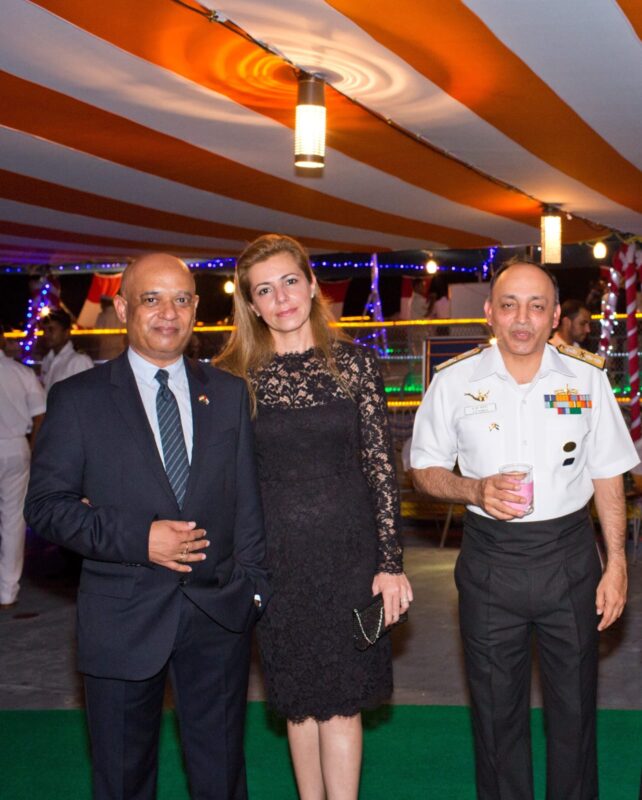From A Client Project to Content Creation
The modern workplace is full of questions:
- How do I achieve personal growth and upward mobility in my career?
- How can I develop skills that align with my strengths and manage my career path effectively?
- What am I doing right in the workplace, and what should I do more?
- What am I doing wrong professionally, and what should I change—and change it to what?
- If I’m doing so much right, why am I not being acknowledged for it and not getting the desired results?
- How can I support my team effectively?
- How can I manage myself while managing others?
- How do I tackle challenges like managing performance or driving organizational culture change?
These questions have been central to my work for over 26 years—whether as a former career HR professional, a consultant, or someone offering support to friends and former colleagues. Some of these questions don’t have quick answers. They require reflection and, at times, feel like solving a jigsaw puzzle—one that, for some of us, can take years of trial and error to piece together.
While each of us navigates our own path, sharing our experiences and lessons can make the journey a little easier—not just for ourselves but also for others.
The Story Behind Muriel’s Blog Studio
Since January 2024, when I wasn’t working on technical proposals for bid submissions, I was partnering on a client’s performance and process improvement project which a consultant had formerly struggled with. At the end of the project after assisting with the development of SOPs, KPIs, etc across some departments, I developed a customized performance management process tailored to their organization. I chose to stick to a traditional approach because it aligns with expectations and is more likely to be widely adopted during its initial implementation.
A consultant friend of mine—someone I’ve worked with for over 15 years—used to say when we implemented our first performance management initiative together: “The aim isn’t to have a perfect process, but a process that works perfectly.”
While training is an integral part of the process, I was cautious of a familiar pattern: people attend training sessions and leave with notes and good intentions, but much of it is forgotten within weeks or days. I wanted to create something that would stick—something people could revisit whenever needed, keeping those key points at hand.
So, I started creating a series of videos to guide managers through the performance review/appraisal meetings and discussions.
Making Training Stick: Why Practical Implementation Matters
Around the same time, I came across a video showcasing efforts towards Jordan’s public sector modernization program. I felt excited for my country, appreciating the investment and the admirable dedication involved. Then, in one of the scenes, I noticed a facilitator writing ‘SMART’ on a big whiteboard as people sat at round tables observing her, their eyes peeled and arms crossed. She was most likely providing training on setting SMART objectives.
I felt a twinge of dis-ease because, although I deeply respect the investment in training, it reminded me of past experiences with former employers who spent significant resources on similar programs—one of which was on setting SMART objectives—only for managers to struggle and feel lost when it came to practical and effective implementation. Often, they would avoid these processes entirely, unsure if they were doing it right.
Some of these managers during training may have been thinking: Well, what’s the point of this? Why do I have to do this? Or, this is too hard. Or perhaps even: “I couldn’t grasp the concept. But what would that say about me if I admit it—especially when Ahmad here seems to get it, even though he’s seven or ten years my junior.“
I wanted to address this gap. My solution? Create something people could refer back to anytime—clear, simple, accessible, and practical tools to navigate some of these challenges effectively. Starting a YouTube channel focused on HR topics, as well as personal and professional development, had been on my mind for a while. The idea felt exciting, though finding the time to make it happen had always been the challenge.
Why Writing Matters
While creating videos has been an exciting way recently to share knowledge, experiences, and my perspective on certain topics, writing is where my heart is and has always been. It’s where I feel most at home, even if my work commitments don’t always allow the space to do it much more often. Especially if I want to share something meaningful, carefully thought out and well-researched, and, above all, honest and from the heart. It takes a lot of my time—but to me, it is necessary.
Muriel’s Blog has been an invaluable form of release, and it became a deeply personal tool when I was trying to dig myself out of depression after my diagnosis in May 2019 (I was highly functioning until I wasn’t)—a chapter that is now securely in the rearview mirror. Writing helped me process my experiences, understand how I felt about them and why, and, most importantly, find a way to express myself constructively rather than through frustration or anger. It was during this time that I discovered just how powerful creativity could be as a sanctuary.
Even with just a few readers and recurring visitors, the process itself has been transformative—or rather, a word I like to use, “transportive,” because it carried me to a space of peace and tranquility within myself—a place where I felt comfortable in my own skin. It’s hard to explain precisely how. Writing in this space always felt like a safe zone, allowing me to express myself openly, where before, like most people, I was highly uncomfortable with criticism.
This blog reflects that process of transformation—both personal and professional—which is why I call it “Metamorphosis.” The brilliant artist, Mariam Beirouty, I think captured this beautifully in the featured image for the blog, articulating what I often struggled to put into words. Muriel’s Blog Studio naturally became an extension of this.
During that time, before it was in the rearview, there were days I could only start getting ready for work after listening to some wisdom from Jim Rohn’s seminars on YouTube: “If the why is powerful, the how is easy.” His words and his voice gave me just enough of a nudge to move forward—like a triple shot of espresso on an empty stomach—when I had misplaced the overwhelming positivity, sense of purpose, drive, and inherent motivation that had been naturally within me for as long as I could remember, radiating through my eyes and shaping the prism through which I viewed my professional life and everything beyond it.
I can’t begin to tell you how alarming it was for me to go from there to thinking about everything from the perspective of, “Well, what is the point?! “ I thought I had forever lost my why. And if I didn’t have that sense of purpose—if I didn’t have that and, more importantly, if I didn’t have me and in the right mindset—then what on earth would keep driving me forward?
But I can’t talk about that subject or my recovery without mentioning the fantastic Dr. Gregor Kowal, Senior Consultant Psychiatrist, Psychotherapist, and Family Medicine Specialist, (German Board Certified) who’s based in Dubai, to whom I owe a huge debt of gratitude for putting me on the road to recovery. I had ignored all the signs and struggles until concentrating became impossible. In the end, that’s what prompted me to seek out his help. God knows how many times I picked up the phone, dialed the clinic’s number, and then hung up, thinking I could white-knuckle my way through – like a football player ready to charge forward, hand pressed hard against the ground – the regular stance I adopted through most challenges in life. However, I was forced to acknowledge that this situation was different, that this wasn’t going to get resolved with grit and determination alone. I think an important part of our strength is admitting to ourselves when we can’t do something on our own, and it was such a relief to learn that what was wrong could be fixed.
That experience with Jim Rohn’s seminars and excerpts from his books stayed with me and is a constant reminder of the power that even a few words or a single piece of content can have on someone. I so deeply appreciate all those incredible creators who generously share their valuable knowledge, experiences, and expertise with the world—content we can read, listen to, and learn from. Sometimes, it leads to a simple but powerful feeling: It’s not just me. Other people face the same challenges and struggles, and that’s okay. And as a result, you feel a little less lonesome in your circumstance.
So, whether it’s a video or a blog post, I hope to create something that resonates with someone or sparks a positive thought or idea. Even if just one person finds value in it, I’m grateful for the opportunity to have made that contribution, and for me, that’s reason enough to keep going.
The Name Behind the Channel
And there you have it—the whole backstory of Muriel’s Blog Studio. I also chose Carving Out a Place in the Work World as an alternative title and one of my earlier blog pieces because that’s how working at my career has always felt to me, and perhaps it reflects what many of us experience psychologically.
Carving out a place in life and in the work world is continually chiseling away at something one aspires to be solid, reliable, meaningful, and long-lasting. For some, it’s about working out of the domain of feeling unseen, overlooked, or unrecognized in the hopes that whatever contribution we make will outlast us, putting so much of ourselves into the process.
It’s also how I see my husband Akbar’s career. His experiences—tough ones—have profoundly shaped my perspective, I think. I’ve absorbed so much of it that it naturally, and sometimes unconsciously, makes its way into my writing and stories. Whenever I need a protagonist in a work—or career-related story, he immediately pops up in my head uninvited and starts talking to me.

He was always “the purple” and proud of it —the one who stands out in a sea of sameness. You’ll understand what I mean if you’ve read It’s Okay to Be Purple. A big, beautiful personality that fills every room he walks into. His customers were always the center of his professional universe. There’s only one of two ways you feel about him when you meet him, but you’ll never forget that you did.
Shared above is a photo of my husband, Akbar Iqbal Khan, with the visiting Indian Navy Vice Admiral Anil Kumar Chawla -Flag Officer Commanding-in-Chief Southern Naval Command (now retired) on board the INS Mysore, a Delhi-Class Destroyer, during its visit to Port Rashid in Dubai—and there I am, as the Leaning Tower of Pisa, right in the middle!
Topics and Key Themes Covered on the Channel
The topics that have been covered on this channel so far are:
For Managers:
- Manager Essentials: How to Prepare for a Performance Review Meeting, Watch Here
- Performance Review Discussions Made Simple: A Manager’s Guide to Success, Watch Here
- Planning for Performance Reviews for Managers (Arabic), Watch Here
- Mastering SMART Objectives for 2025: From Ambition to Action (Complete Guide), Watch Here
- Reviews Gone Wrong: 20 Common Manager Mistakes, Watch Here
- The 14 Golden Rules of Effective Performance Reviews, Watch Here
- How to Effectively and Successfully Manage Performance Review Discussions? An Essential Guide for Managers (Arabic), Watch Here
- Fairness in Performance Evaluations and Reviews, Watch Here, (I think this is a very important topic. People focus on the process a lot, but they don’t overly concern themselves with fairness itself or try as much to build in checks and balances. It’s really interesting that this video got very few views—and even more interesting that the short version, which speaks more from an employee’s perspective, really hit home with people on Instagram. Kind of hints at a certain gap).
For Employees:
- Performance Review Prep for Employees, Watch Here
- Performance Review Prep for Employees (Arabic), Watch Here
- Performance Review Discussion: A Practical Guide for Employees, Watch Here
- Next Steps to Success, Watch Here
- Common Mistakes Employees Should Avoid in Performance Reviews, Watch Here
These videos aren’t a replacement for training—they’re accessible resources you can revisit anytime, offering practical takeaways and thoughtful insights from a career HR professional, a role that remains an integral part of my professional identity even as I explore other paths.
Some of the content will be available in both Arabic and English. However, both the Arabic library and the translation are still in the earlier stages. I’m actively expanding both, and I hope to add templates, guides, and other resources over time—for those who would like to avoid reinventing the wheel. But once again, time remains the biggest challenge.
✨ I’d love for you to check out Muriel’s Blog Studio , hoping you would find value in the content and share your thoughts!
If there’s a topic you’d like to see featured, I’d love to hear from you—this space is meant to evolve with the needs and interests of its readers and viewers.
I’ll likely move next to hiring practices, especially interviewing and selection, because when it comes to interviews, a lot of people like to wing it. Senior managers often don’t feel comfortable admitting, “I’m not really sure what questions to ask or how to interpret a candidate’s answers.”
And many assume it’s as simple as sitting down with a candidate and asking a few questions. Please don’t do that without preparation. Candidates often put in a lot of effort preparing for interviews. Don’t assess their suitability based on irrelevant questions or gut instinct. You may miss out on a gem, someone who could contribute lots of value to your organization, just because they didn’t give the “ideal” answer you had in mind. The goal is to piece together a broader picture. And look, I still get it wrong sometimes—but I’d say I get it right about eight times out of ten, which is great. That comes down to preparation, structure, knowing what you’re really looking for, and also what you’re trying to learn from the conversation.
Below is a video on Fairness in Performance Evaluation and Reviews.


